
Yesterday was the day when 800 years ago, 22-years old Jñānèshvara closed his material eyes for the last time when he took sanjīvana samādhī
What a life. Born to a father who returned to grihasthāshrama after taking pre-matured sannyāsa. All kids were ostracised for such a birth
What a life. Born to a father who returned to grihasthāshrama after taking pre-matured sannyāsa. All kids were ostracised for such a birth
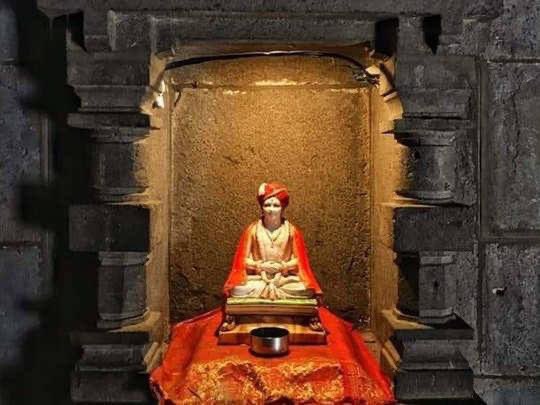
Āchāryas refused to perform upananayana on them for such blatant violation of varNāshrama dharma by their parents.
As prāyaschitta, parents were asked to end their lives.
So when kids (beautiful names) :
1. Nivritti
2. Jñānèshvara
3. Sopāna
4. A daughter : Muktā
Cntd....
As prāyaschitta, parents were asked to end their lives.
So when kids (beautiful names) :
1. Nivritti
2. Jñānèshvara
3. Sopāna
4. A daughter : Muktā
Cntd....

So when kids were (eldest 12 and youngest 4-5), parents jumped in godāvarī and ended their lives.
Upanayana was performed on them thereafter. What a price to pay - to get adhikāra of gāyatri and start a second-birth? 😞
Different society.
Upanayana was performed on them thereafter. What a price to pay - to get adhikāra of gāyatri and start a second-birth? 😞
Different society.

At the age of 10, during pilgrimage to tryambakèshwara jyotirlinga, a divine chance leads him to the cave of gahininath - a yogi from bath-samlradaya.
Gahininath initiates 10 year old nivritti and gives him anugraha, mantra and dikshā.
Gahininath initiates 10 year old nivritti and gives him anugraha, mantra and dikshā.
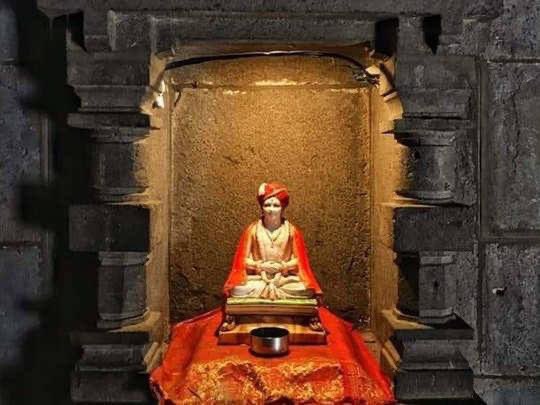
Within few months, 10-11 year old nivritti attains kaivalya pada.
He then gives anugraha to his siblings, notably second-born Jñānèshvara.
Jñānèshvara (along with other siblings) too achieves the highest jīvanamukta state - under guidance of elder brother and guru.
He then gives anugraha to his siblings, notably second-born Jñānèshvara.
Jñānèshvara (along with other siblings) too achieves the highest jīvanamukta state - under guidance of elder brother and guru.
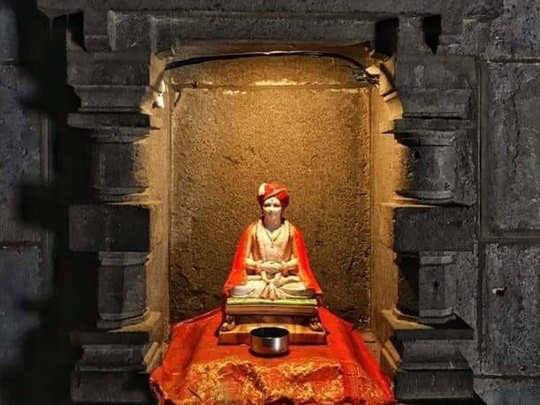
Guru nivruttunātha orders brother/shishya Jñānèshvara to write down his experiences and write a Tīkā (commentary) of shrimad-Bhagvat-gītā in Marathi.
16 year old boy, composed amrutānubhava and bhāvārtha-dīpīkā (popularly known as Jñānèshvarī in Marathi).
16 year old boy, composed amrutānubhava and bhāvārtha-dīpīkā (popularly known as Jñānèshvarī in Marathi).

After completion of these treatises, the siblings move around India, visit north (witness what Khiljis are doing in north - Deccan was still free by then) - do tīrthayātrā.
Return home.
Return home.
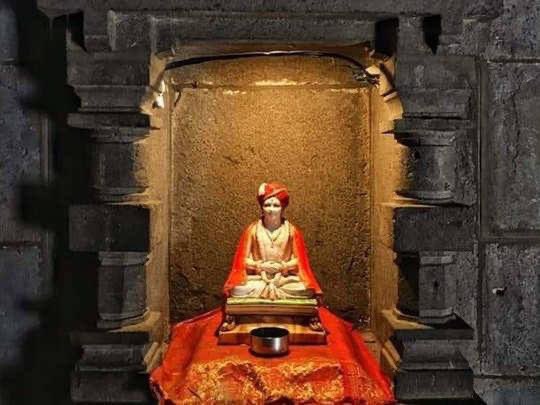
At age of 22, Jñānèshvara (after taking permission from his guru/big brother) declares his job in the life and purpose for taking up the body is over.
He takes sanjīvana samādhi. Sits in a cave in padmāsana, closes his eyes.
Yesterday was the tithi on which this happened.
He takes sanjīvana samādhi. Sits in a cave in padmāsana, closes his eyes.
Yesterday was the tithi on which this happened.

Santa nāmadèva beautifully describes this episode. It is not possible for me to translate it. But anyone who can read dèvanāgari and has working knowledge of tatsam and tadbhav words from Sanskrit or their own mother-tongue, should not have problems in understanding these lines. 
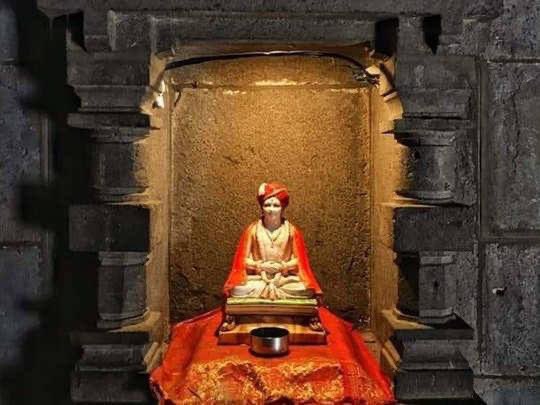
देव निवृत्ति यांनी धरिले दोन्ही कर । जातो ज्ञानेश्वर समाधीसी ॥१॥
नदीचिया माशा घातलें माजवण । तैसें जनवन कलवलें ॥२॥
दाही दिशा धुंद उदयास्ताविण । तैसेंचि गगन कालवलें ॥३॥
जाऊनि ज्ञानेश्वर बैसले आसनावरी । पुढें ज्ञानेश्वरी ठेवियेली ॥४॥
नदीचिया माशा घातलें माजवण । तैसें जनवन कलवलें ॥२॥
दाही दिशा धुंद उदयास्ताविण । तैसेंचि गगन कालवलें ॥३॥
जाऊनि ज्ञानेश्वर बैसले आसनावरी । पुढें ज्ञानेश्वरी ठेवियेली ॥४॥
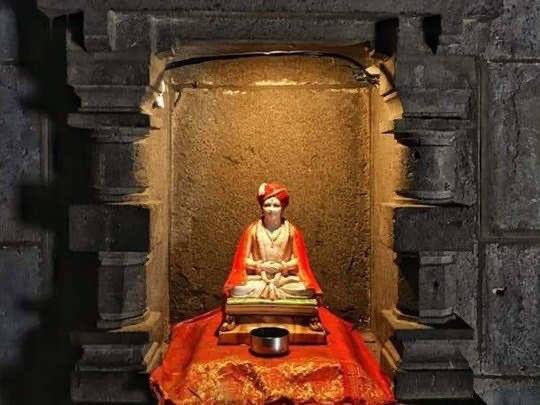
ज्ञानदेव म्हणे सुखी केलें देवा । पादपद्मीं ठेवा निरंतर ॥५॥
तीन वेळां जेव्हां जोडिलें करकमळ । झांकियेले डोळे ज्ञानदेवें ॥६॥
भीममुद्रा डोळा निरंजनीं लीन । जालें ब्रह्मपूर्ण ज्ञानदेव ॥७॥
नामा म्हणे आतां लोपला दिनकर । बाप ज्ञानेश्वर समाधिस्थ ॥८॥
तीन वेळां जेव्हां जोडिलें करकमळ । झांकियेले डोळे ज्ञानदेवें ॥६॥
भीममुद्रा डोळा निरंजनीं लीन । जालें ब्रह्मपूर्ण ज्ञानदेव ॥७॥
नामा म्हणे आतां लोपला दिनकर । बाप ज्ञानेश्वर समाधिस्थ ॥८॥

Nāmadèva then goes on to briefly describe what happened to other siblings.
निवृत्तीनें बाहेर आणिले गोपाळ । घातियेली शिळा समाधीसी ॥१॥
सोपान मुक्ताई सांडिती शरीरा । म्हणती धरा धरा निवृत्तीसी ॥२॥
Elder brother/guru nivritti placed the shilā at the mouth of samādhi himself.
निवृत्तीनें बाहेर आणिले गोपाळ । घातियेली शिळा समाधीसी ॥१॥
सोपान मुक्ताई सांडिती शरीरा । म्हणती धरा धरा निवृत्तीसी ॥२॥
Elder brother/guru nivritti placed the shilā at the mouth of samādhi himself.

आणिकांचीं तेथेम उद्विग्न तीं मनें । घालिताती सुमनें समाधीसी ॥३॥
नामदेवें भावें केली असे पूजा । बापा ज्ञानराजा पुण्यपुरुषा ॥४॥
————————————————
श्रीराम जय राम जय जय राम.... 🙏🙏🙏🙏
नामदेवें भावें केली असे पूजा । बापा ज्ञानराजा पुण्यपुरुषा ॥४॥
————————————————
श्रीराम जय राम जय जय राम.... 🙏🙏🙏🙏
• • •
Missing some Tweet in this thread? You can try to
force a refresh



